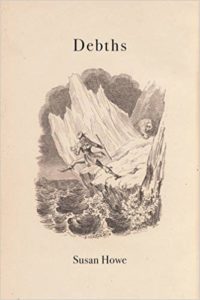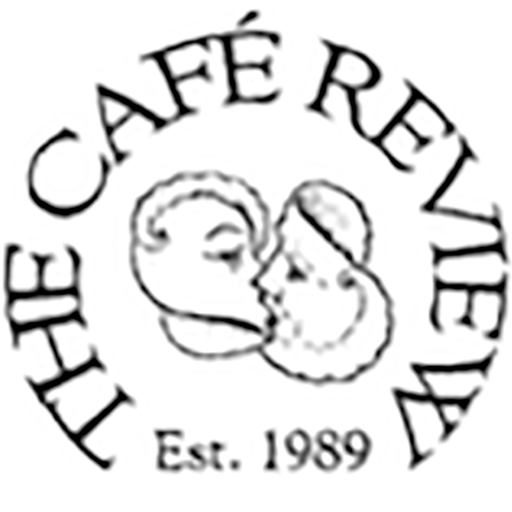Debths
 Debths,
Debths,
by Susan Howe.
New Directions Publishing, 2017,
244 pages, paperback, $15.95,
ISBN: 978-0-8112-2685-1
An echo is also a kind of mirror, sending something back and crossing space. Susan Howe’s Debths is replete with these kinds of inflections and returns, and the ghosts that wander between them. Inspired in part by artist Paul Thek’s 2010 retrospective at the Whitney Museum of American Art, Diver,Howe’s one-month residency at the Isabella Stuart Gardner Museum, and Howe’s lifelong interest in archival materials, Debthsmines the infinite and seemingly bottomless intertextual webs of inter-connections between things.
The opening “Forward” to Debthsoperates as a kind of key to the entire book, but not explicitly; it invites you in to her very specific kind of thinking. She lets us know that “secret connections among artifacts are audible and visible and yet hidden until you take a leap” which illuminates not only her method of making, but also how we might read the work. Hers is a collagist aesthetic, cobbling together disparate parts and inviting you to take this leap, risking, as well, a fall into the rich, echoey depths between things. Each fragment reflects and resounds, effectively asking the reader to actively enter into and weave their own relationship with the text.
Isabella Stuart Gardner is famous for her injunction that all objects and works of art in the galleries remain just as she left them in death, a careful reflection of her most intimate decisions. This focus on arrangement leads Howe to consider Gardner a pioneer American installation artist. She placed objects in relationship to each other; Bellini’s portrait of Christ Carrying the Crossis placed “so that his tear-streaked face… is aimed directly at Jupiter’s savage eye” in Titian’s Rape of Europa,and Titian’s work is displayed over a swatch of fabric from her own wedding gown. In “Titian’s Air Vent,” the second section of the book, we are led by these and other material things: “Reliquary, trellis cross-grid, shoelace, comma”; “Seaweed, nets, shells, fish, feather.” Echoing some of Gardner’s collected effects, these material lists could equally be gallery tags for Paul Thek’s sculpture and installations. Howe alludes to his work—itself made of assembled fragments—throughout Debths, and in particular his bronze cast work, Effects Of The Pied Piper,moved her.
The cover of the book, with an illustration by George Cruikshank, shows a man leaping off a cliff, chased by a bear and leaving a wooden shoe behind. Cruikshank illustrated an 1877 publication of Grimm’s Goblin Tales,including fanciful drawings of Rumpelstiltskin. Howe loves mythology and folklore, and a recurrent narrative in this collection is that of the Rumpelstiltskin story, “Tim Tit Tot,”1which is the title of the third section of Debths. Howe has said that she sometimes thinks of this series of collaged poems as “collaged essays on the last poems of William Butler Yeats, the poet [she] loved first.” Yeats, too, drew from a wellspring of legends, folklore, ballads and songs to make his works, grounding his more mystical interests in the materials of the world.
If the word “debths” (borrowed from Finnegan’s Wake) rings with “debt” and “depth”—we also find an echo in the word “death.” Yeats faced death with courage fueled in part by visions of reincarnation or resurrection. Often mining the critical myths of Christianity, Paul Thek too, represented the state of uncertainty between life and death in works such as his 1967 Tomb (Death of a Hippie),and the 1970 Fishman in Excelsis,a latex cast of his body suspended swimming with fish above the viewer. In her eighties, Howe has suggested this may be her last book, and it’s hard not to feel that she too is mining this state of uncertainty. As Howe shows us here, a kind of resurrection or rebirth can be established through a deep reviewing of archival materials and these artists’ works themselves. Their ghosts wander within the gaps in the text.
The word “rumpelstilzchen” in German means “little rattle stilt,” and refers to the rattling of a post or pole that provides support for a structure. Arumpelstilzis the name of a type of goblin, or a “rattle-ghost.” In the tale, a miller’s daughter is given to a king on a boast—that she can spin threads of gold from straw. But she needs the help of the small rattle-ghost Rumpelstilskin to do so—and he extorts first her jewelry and then her future child in return.
Many shuttles many treadles
That beam was only a straw
So long as one fact stands
isolated and strange one
fact supported by no fact
Woodslippercounterclatter2
I can spin straw by myself
Who is the goblin here? Whoever it is, Howe has kicked him out. These poems—crushed conjunctions of text fragments from folklore, poetry, philosophy, art criticism, and history—continue to amplify the feeling that you are just about to take a leap that makes things clear, and then you’re held there, hovering at the cliff edge, while Howe spins threads of gold.
So many things happen by bringing to light what has long been hidden. Lilting betwixt and between. Between what? Oh everything. Take your microphone. Cross your voice with the ocean.
What is extraordinary about this book is how, if you take the time to follow its references, it drives you ever deeper into an intricate wilderness: each question fosters another one, each path leads somewhere new. This work isn’t about arrival as much as it is about wandering the complex webs of the world’s many echoing reflections. Arrival is a kind of death after all, and that is a leap we don’t want to make.
—Julie Poitras Santos
1These poems were previously published, with artwork by R.H. Quaytman, by the Library Council of the Museum of Modern Art in 2014 as Tom Tit Tot.
2woodslippercounterclatteris the title of another related work, a sound-work collaboration with composer David Grubbs.

